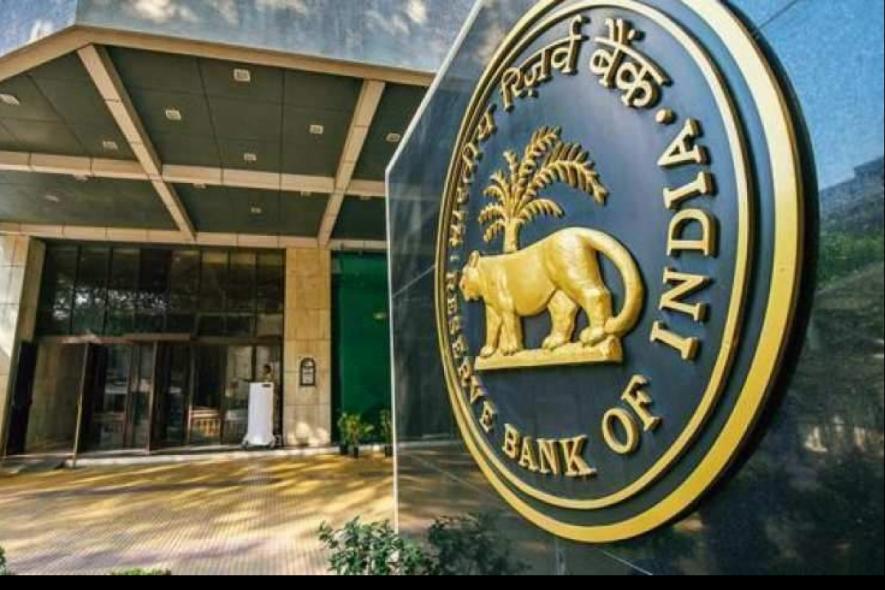Centre 'Omits' Key RBI Objections to Demonetisation in Supreme Court Affidavits

RBI. Image Courtesy: PTI
Days before the Supreme Court (SC) is set to deliver a verdict on a clutch of 58 petitions challenging the government’s November 8, 2016, demonetisation order, the Centre has submitted affidavits in the top court claiming that the “well-considered” decision was taken after consulting the Reserve Bank of India (RBI) in February of that year.
The Central bank too in its affidavit claimed that due process was followed and it had recommended the demonetisation.
However, the government and the RBI affidavits don’t mention that the Central bank had put on record objections even as it recommended the note ban, The Indian Express reported. The objections were put on record just hours before the note ban announcement as minutes of the RBI’s Central Board meeting.
Several key points and the RBI’s concerns and objections are missing from the affidavits. Prime Minister Narendra Modi used the ‘currency in circulation (CIC) as percentage of GDP’ metric cited to justify demonetisation. “The magnitude of cash in circulation is directly linked to the level of corruption,” he said in his speech on November 8.
“The ratio of CIC to GDP has been 11% or more in the last five financial years beginning from 2011-12 to 2015-16,” one of the Centre’s affidavits stated. Quoting other reports, it noted that at 11.55%, India’s cash-to-GDP percentage ratio was much higher than that of the US at 7.74%.
However, the affidavit didn’t mention that CIC as a percentage of GDP jumped back to pre-demonetisation levels within three years. “The currency-GDP ratio increased to its pre-demonetisation level of 12.0% in 2019-20 from 11.3% a year ago,” the RBI’s Annual Report for 2019-20 states. This ratio rose further to 14.4% in 2020-21 before declining to 13.7% in 2021-22, according to the bank.
The affidavit also mentioned that the “circulation of Rs 500 and Rs 1,000 banknotes vis-a-vis that of Rs 50 and Rs 100 for the preceding five years (as per RBI data) had shown a steep rise for the two highest denominations i.e., 76.38% for Rs 500 and 108.98% for Rs 1,000”.
The steep rise compared with the rise in the size of the overall economy makes it inexplicable, the Centre said. “Further, as per the data available in the Economic Survey for 2014-15 and 2015-16, the size of the economy has grown less than 30% from 2011-12 to 2015-16,” it stated.
However, the RBI’s Central Board had flagged a flaw in this analysis that has been omitted from the affidavit. “The growth rate of the economy mentioned is the real rate while the growth in currency in circulation is nominal. Adjusted for inflation, the difference may not be so stark. Hence this argument does not adequately support the recommendation (for demonetisation),” according to the minutes of the RBI’s Central Board meeting held at 5.30 pm, only two-and-a-half hours before demonetisation, on November 8.
The affidavit also claimed that fake currency notes were the first of the “three specific mischiefs which had adversely impacted the economy over the past year”.
The affidavit didn’t include the RBI’s response to its claim. “While any incidence of counterfeiting is a concern,” the Central Board argued, “Rs 400 crore as a percentage of the total quantum of currency in circulation (more than Rs 17 lakh crore) is not very significant”.
The government claimed in the affidavit that demonetisation aimed to address the “storage of unaccounted wealth in the form of high denomination notes [Rs 500 and Rs 1,000], which happened to be fake in many instances”.
However, the RBI had dismissed the claim saying, “Most of the black money is held not in the form of cash but in the form of real sector assets such as gold or real estate and that this move [demonetisation] would not have a material impact on those assets.” The objection has been omitted from the affidavit.
Demonetisation, the affidavit claimed, aimed to target the third ‘mischief’ of the use of fake currency for terrorism and other subversive activities.
The minutes of the RBI meeting don’t mention the issue of fake currency or high-denomination notes being siphoned towards terror funds.
The government also supported demonetisation by claiming that the RBI was, in any case, working on introducing a new series of notes since January 2014 and that the decision simply attempted to benefit from that timing.
“The government of India and the Reserve Bank considered that the introduction of new series of notes could provide a very rare and profound opportunity to tackle all the three problems of counterfeiting, terrorist financing and black money by demonetisation of Rs 500 and Rs 1,000…,” the affidavit stated.
“It was also presented (to the RBI’s Central Board) that such a proposal (demonetisation) could not have come at a more opportune time than coinciding with the introduction of the MG (new) series of notes,” the affidavit added.
However, the RBI never mentioned such an “opportune” timing in the meeting. The RBI had to constitute a task force for recalibration of ATMs on November 14 showing that demonetisation had nothing with the bank’s timing and preparation regarding the introduction of new currency notes.
Emails sent to the Union finance ministry and the RBI by The Indian Express remained unanswered.
Get the latest reports & analysis with people's perspective on Protests, movements & deep analytical videos, discussions of the current affairs in your Telegram app. Subscribe to NewsClick's Telegram channel & get Real-Time updates on stories, as they get published on our website.






















